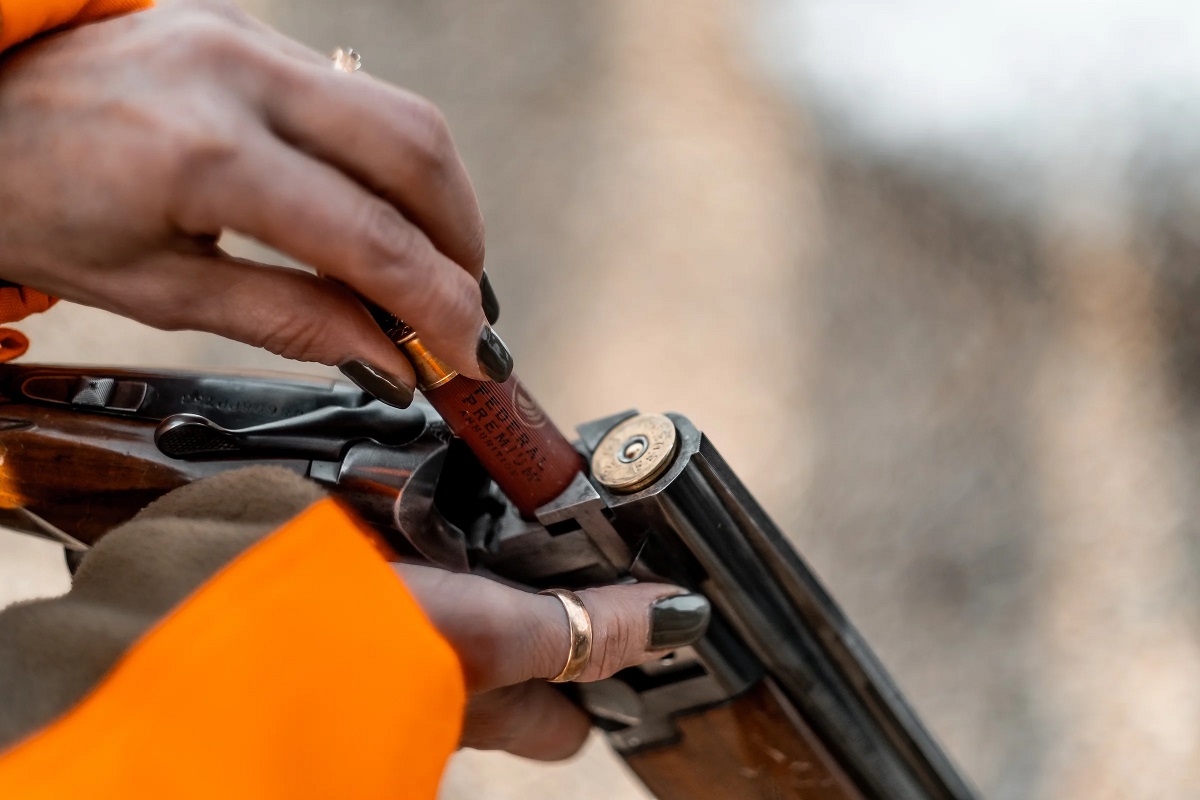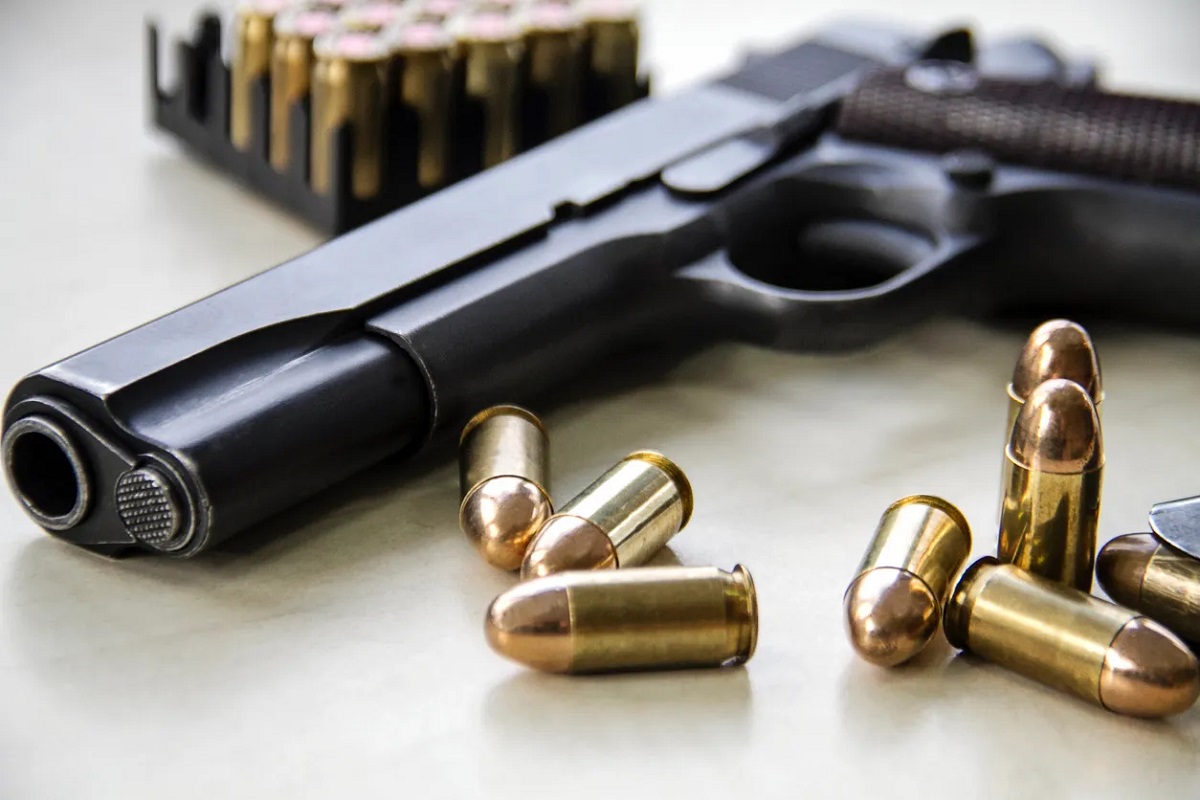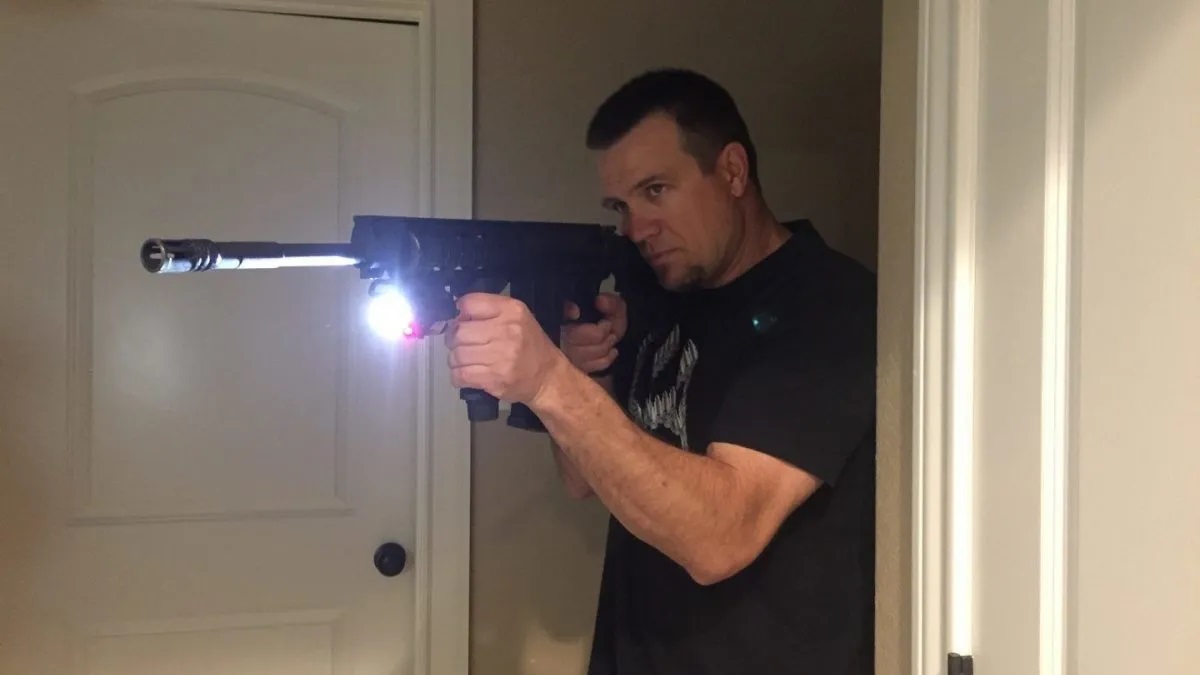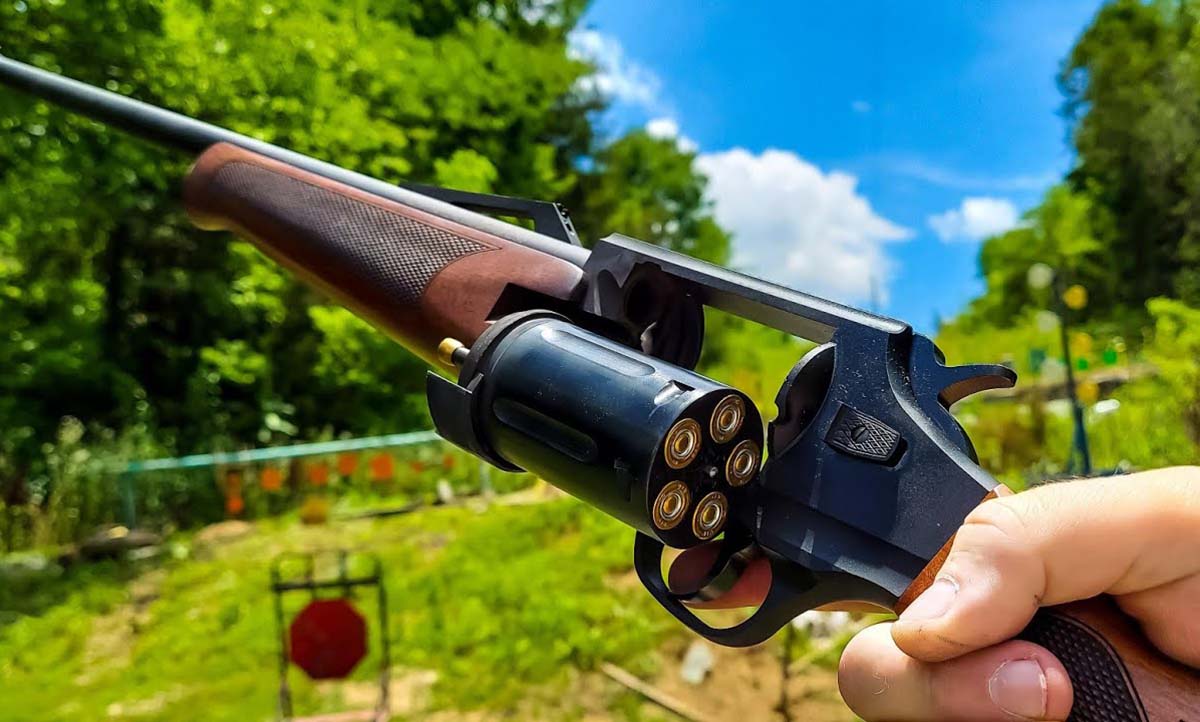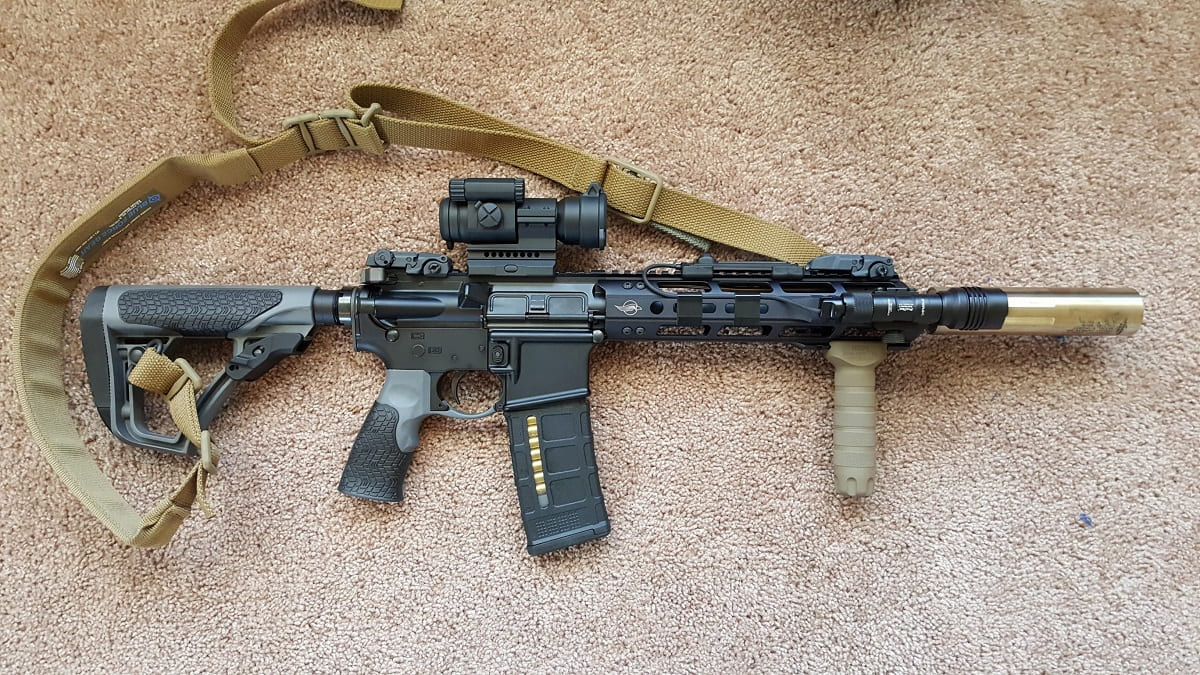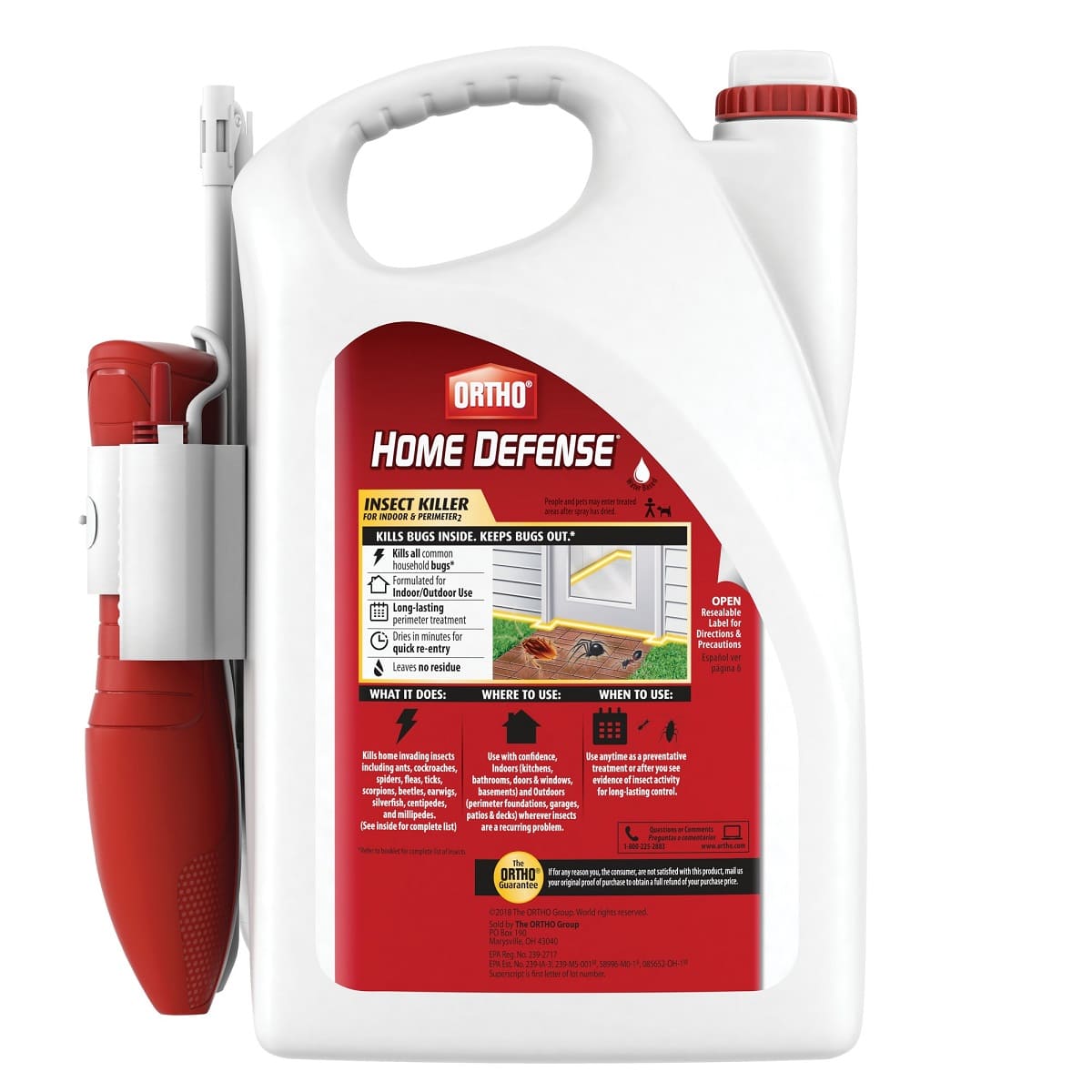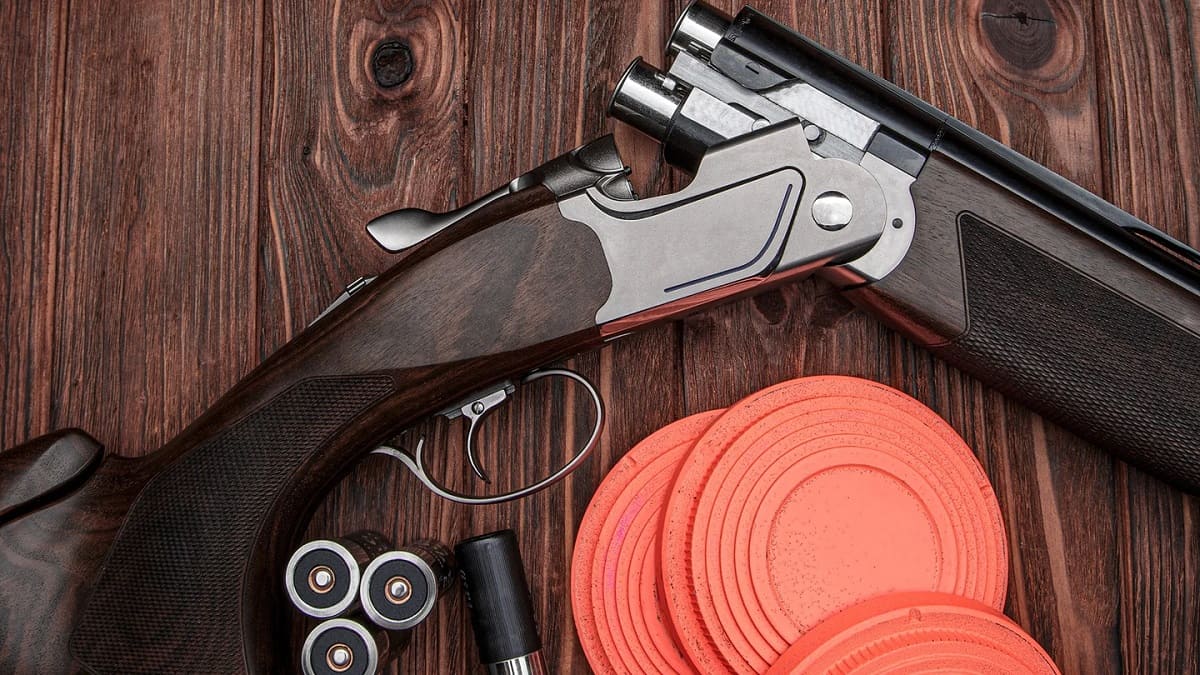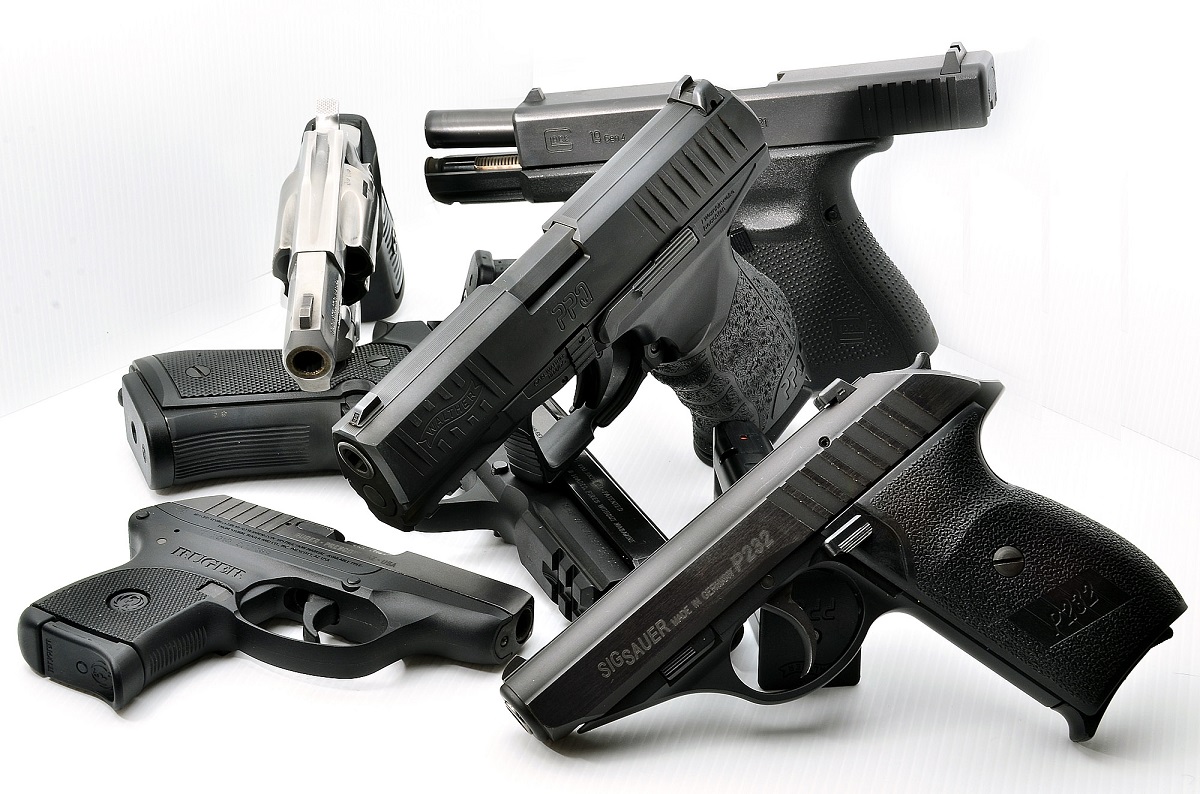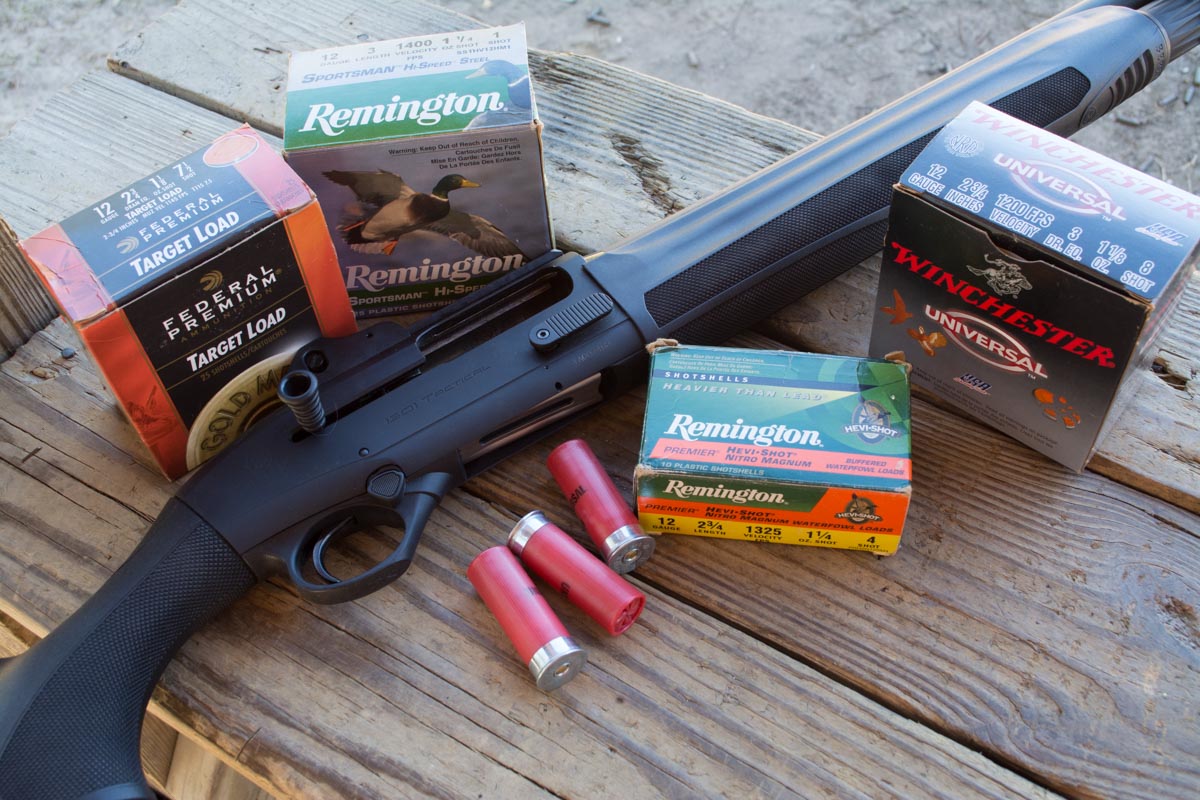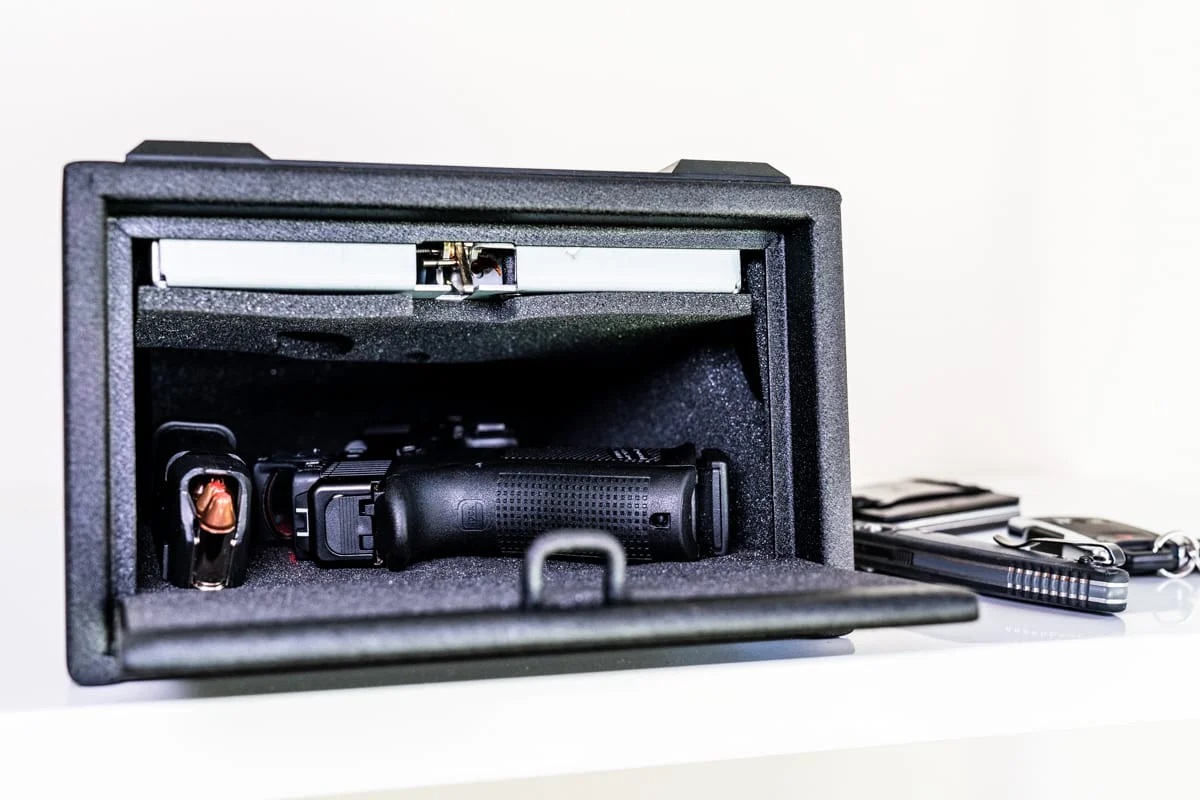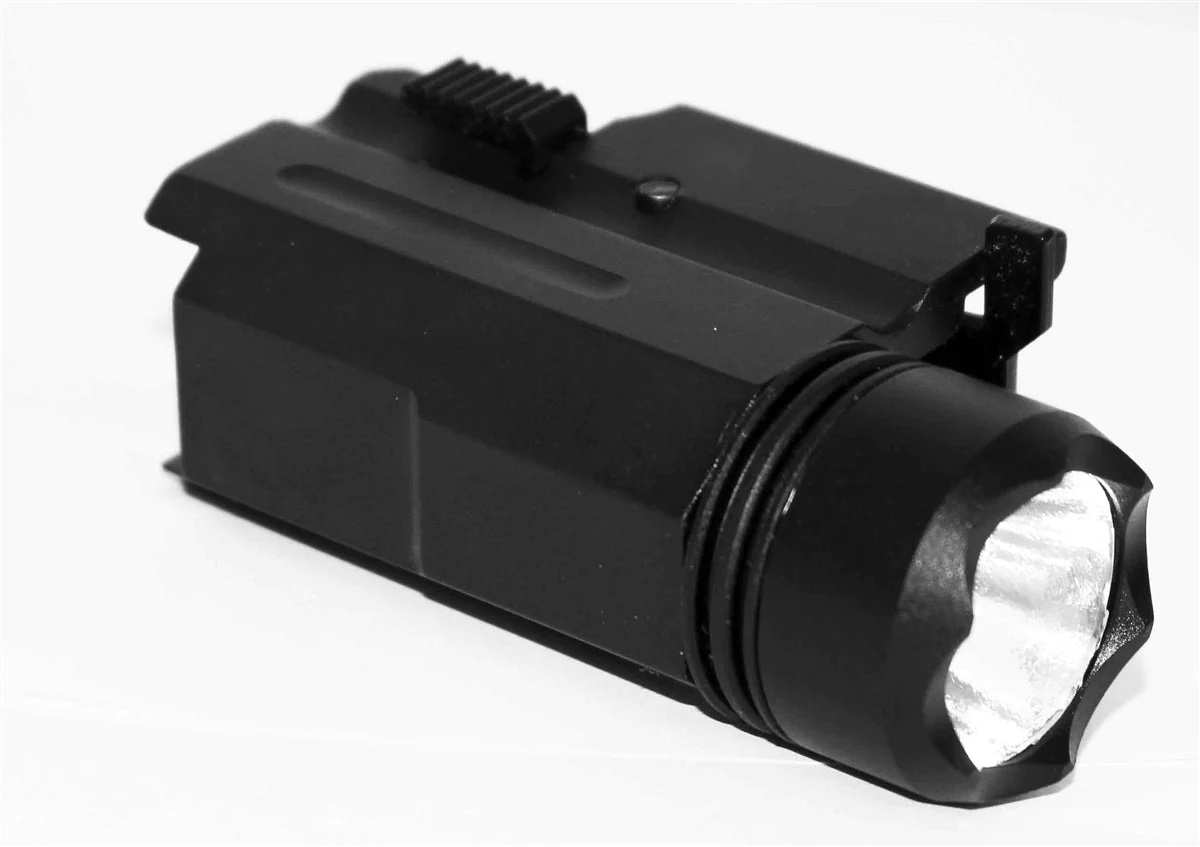Home>Home Security and Surveillance>How To Set Up Home Defense
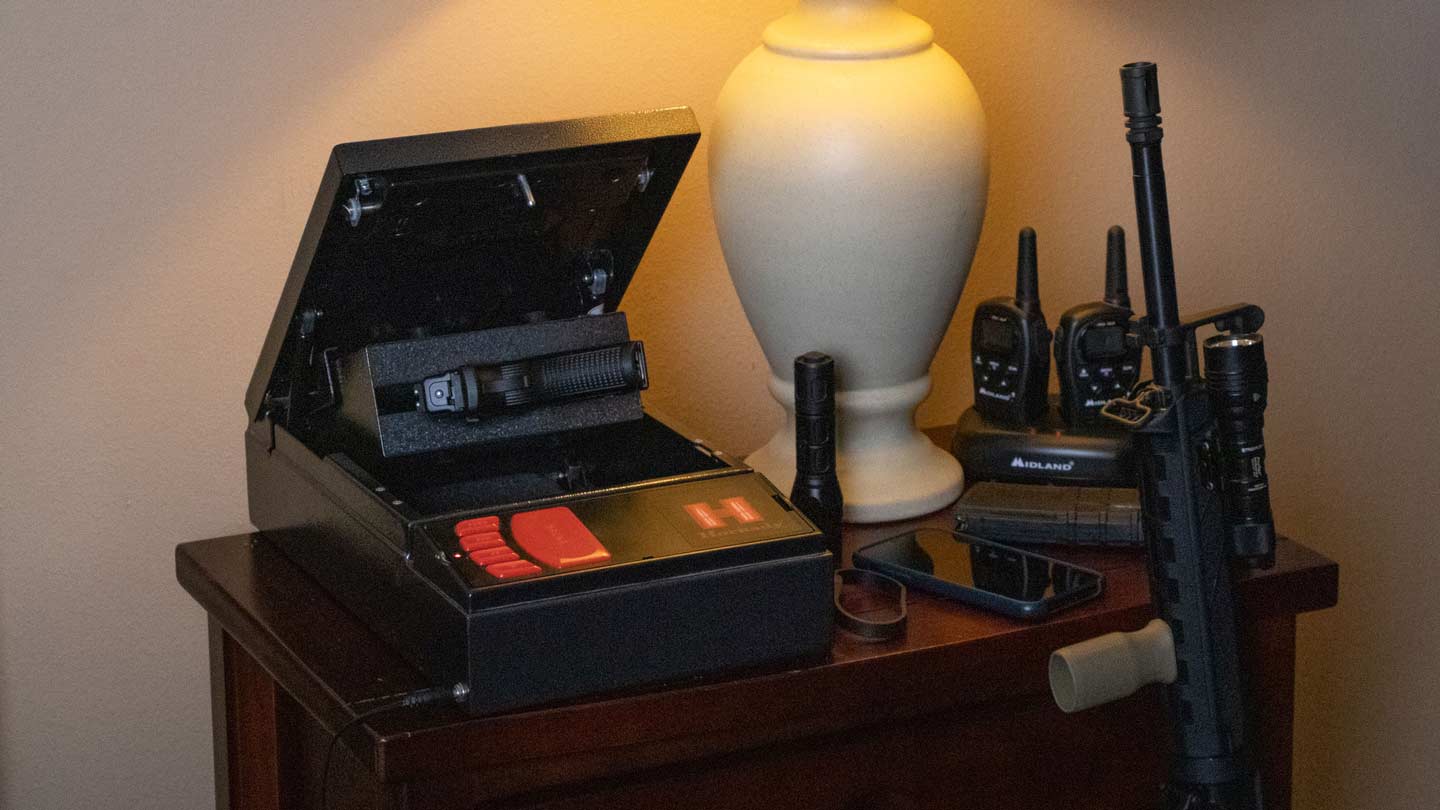

Home Security and Surveillance
How To Set Up Home Defense
Modified: March 6, 2024
Learn how to set up your home defense with effective home security and surveillance measures. Safeguard your property and loved ones with expert tips and techniques.
(Many of the links in this article redirect to a specific reviewed product. Your purchase of these products through affiliate links helps to generate commission for Storables.com, at no extra cost. Learn more)
Introduction
Welcome to our comprehensive guide on setting up a home defense system. In today’s world, ensuring the safety and security of your home and loved ones is of utmost importance. With the rise in burglary and property crimes, it’s essential to take proactive measures to protect your property.
Investing in a home security system and implementing various safety measures can provide peace of mind and act as a deterrent to potential intruders. In this guide, we will walk you through the process of assessing your home’s vulnerabilities, choosing the right security system, and implementing additional measures to enhance your home’s protection.
By following the tips and recommendations outlined in this guide, you’ll be equipped with the knowledge and tools necessary to create a secure and fortified home environment. Let’s dive in and explore the steps to fortifying your home defense.
Key Takeaways:
- Prioritize home security by assessing vulnerabilities, choosing the right security system, and reinforcing entry points. Implementing these measures creates a safe and secure environment for your family.
- Enhance personal safety with self-defense training, preparedness, and neighborhood watch programs. By staying informed and taking proactive steps, you can protect yourself and your community.
Read more: How To Pick A Shotgun For Home Defense
Assessing your Home’s Vulnerabilities
Before diving into setting up a home defense system, it’s important to assess the vulnerabilities present in your home. By identifying weak points, you can address them effectively and implement targeted security measures. Here are some key areas to consider:
- Exterior Access Points: Start by examining all the entry points to your home, such as doors, windows, and garage doors. Check for any damaged or weak areas that could be easily exploited by intruders.
- Landscape and hiding spots: Take a look at your property’s landscape and consider any potential hiding spots or blind spots that could provide cover for criminals. Trim shrubs and bushes near windows and ensure there are no dark areas where intruders could hide undetected.
- Lighting: Assess your outdoor lighting to ensure that all entry points, pathways, and the perimeter of your property are well-lit. Adequate lighting not only deters potential intruders but also increases overall visibility, making it easier to spot any suspicious activity.
- Security Systems: If you already have a security system in place, review its effectiveness and any possible vulnerabilities. Consider upgrading to a more advanced system that includes features such as motion sensors, smart technology integration, and 24/7 monitoring.
- Neighborhood: Evaluate the safety and security of your neighborhood. Are there any recent incidents of crime? If so, it’s important to be aware of the potential risks and take necessary precautions.
By carefully assessing these vulnerabilities, you can prioritize the areas that require immediate attention and take appropriate measures to address them. Remember, each home is unique, so it’s crucial to tailor your home defense strategy according to your specific needs and circumstances.
Choosing the Right Security System
Selecting the right security system for your home is crucial in establishing a robust defense against potential intruders. With a variety of options available on the market, it’s essential to consider your specific needs and budget. Here are some factors to keep in mind when choosing a security system:
- Monitoring Options: Decide whether you want a professionally monitored system or a self-monitoring one. Professionally monitored systems typically come with a monthly fee, but they offer 24/7 surveillance and immediate response to emergencies. On the other hand, self-monitoring systems allow you to monitor your home through a mobile app, but you are responsible for taking actions in case of any alerts.
- Alarm System: Look for a security system that includes a reliable alarm system. Alarms not only scare away intruders but also alert you and your neighbors of a potential break-in. Consider systems with loud sirens and remote control options.
- Video Surveillance: Consider whether you want a security system with video surveillance capabilities. Video cameras can provide evidence in case of a break-in and act as a deterrent. Look for features like high-resolution video, night vision, and remote access to the camera feed.
- Smart Home Integration: If you have a smart home setup, look for a security system that integrates seamlessly with your existing smart devices and platforms. This allows you to control and monitor your security system from your smartphone or other connected devices.
- Reliability and Reputation: Research and read reviews about different security system brands and providers. Look for companies with a solid reputation and good customer support. Check if they offer a warranty and ongoing technical assistance.
Remember, no security system is completely foolproof, but by selecting the right one for your home and taking additional measures, you can significantly enhance the safety and security of your property. Take the time to compare different options, consult with professionals, and choose a system that suits your needs and provides you with peace of mind.
Installing Outdoor Lighting
Outdoor lighting plays a crucial role in deterring potential intruders and enhancing the security of your home. Well-placed and strategically installed lights can illuminate your property, making it less attractive to criminals and giving you better visibility at night. Here are some tips for installing outdoor lighting:
- Light Up Entry Points: Focus on illuminating the pathways, driveway, and entrances to your home. Install motion-activated lights near doors and other vulnerable areas to startle and discourage potential intruders.
- Use Motion Sensor Lights: Motion sensor lights are an effective way to conserve energy while providing added security. They activate when they detect movement, alerting you to any activity around your property.
- Consider Timers or Smart Lighting: Timers and smart lighting systems allow you to set specific times for your outdoor lights to turn on and off, even when you’re not home. This gives the illusion that someone is present and can deter burglars who may be scouting for unoccupied houses.
- Illuminate Dark Spots: Identify any dark areas or blind spots on your property and install additional lighting to eliminate hiding places for intruders. Be sure to light up any areas near windows, backyards, and other less-visible parts of your property.
- Choose Energy-Efficient Lighting: Opt for energy-efficient LED lights, which not only save you money on electricity bills but also last longer than traditional bulbs. LED lights are available in various brightness levels, so you can easily find ones that suit your security needs.
- Regular Maintenance: Keep your outdoor lighting in good working condition by replacing any burnt-out bulbs and cleaning the fixtures on a regular basis. This ensures that your lights are always operational and providing optimal security.
Installing outdoor lighting is a relatively inexpensive way to enhance your home’s security. By illuminating key areas, using motion-sensor lights, and strategically placing lights throughout your property, you can create a well-lit and secure environment that deters potential intruders and provides peace of mind for you and your family.
Reinforcing Doors and Windows
Doors and windows are the primary points of entry for intruders, which is why reinforcing them is crucial for home security. By taking steps to strengthen these entry points, you can significantly improve your home’s defenses. Here are some effective ways to reinforce your doors and windows:
- Upgrade Door and Window Materials: Consider replacing hollow-core doors with solid wood or metal doors that are more resilient to forced entry. For windows, consider installing laminated or tempered glass, which is more difficult to break.
- Install Deadbolt Locks: Deadbolt locks provide an additional layer of security compared to standard doorknob locks. Choose heavy-duty deadbolt locks and install them on all exterior doors. Ensure that the deadbolt extends at least one inch into the door frame.
- Add Door Reinforcement Plates: Strengthen the area around the lock and strike plate by installing a door reinforcement plate. These plates, made of sturdy metal, reinforce the lock area and make it more resistant to kicking or prying.
- Use Security Bars or Grilles: Install security bars or grilles on windows, especially in vulnerable areas such as basement windows or ground-level windows. These bars prevent intruders from easily accessing your home while still allowing ventilation.
- Secure Sliding Doors: Sliding glass doors can be particularly vulnerable to break-ins. Install a bar or rod in the track to prevent the door from being forced open. You can also reinforce the glass with shatterproof film for added protection.
- Install Window Locks: Most standard windows come with basic locks, but consider adding additional window locks for extra security. These locks can deter intruders and prevent windows from being easily pried open.
- Use Window Security Film: Window security film is a clear film that reinforces glass and makes it more difficult to break. It can be applied to windows and provides an added layer of protection against forced entry.
Reinforcing your doors and windows is an essential element of home defense. By investing in high-quality materials, adding deadbolt locks, reinforcing frames, and using additional security measures, you can significantly improve the security of your home and enhance your peace of mind.
Read more: How To Train A Dog For Home Defense
Securing Entry Points
In addition to reinforcing doors and windows, securing the entry points of your home is essential for a comprehensive home defense system. Here are some additional measures you can take to secure the entry points:
- Upgrade Door and Window Hardware: Replace standard screws with longer and stronger screws to secure hinges, strike plates, and door jamb plates. This helps reinforce the door or window frame and makes it more difficult for intruders to force their way in.
- Use Door and Window Sensors: Install door and window sensors as part of your security system. These sensors can detect if a door or window is opened or tampered with, sending an immediate alert to you and triggering the alarm system.
- Install Window Security Bars: Window security bars can be highly effective in preventing forced entry. Install them on ground-level windows or any windows that are easily accessible from the outside. Ensure they have a quick-release mechanism for easy exit in case of emergencies.
- Secure French Doors: French doors are popular entry points for burglars because they often have weak locking mechanisms. Install a sturdy deadbolt at the top and bottom of each door, in addition to the existing handle lock.
- Reinforce Sliding Doors: Sliding glass doors can be vulnerable to being lifted off their tracks. Install a bar or rod in the track to prevent the door from being forced open. You can also place a secondary lock or pin at the top or bottom of the door for added security.
- Secure Pet Doors: If you have a pet door, make sure it can be securely locked when not in use. This prevents intruders from using the pet door as an entry point.
- Consider Smart Locks: Smart locks offer advanced security features and convenience. They can be controlled remotely and provide options for keyless entry with unique access codes. Some smart locks also integrate with other security systems.
Securing the entry points of your home is crucial for preventing unauthorized access. By implementing these measures and combining them with a comprehensive security system, you can create a formidable line of defense against potential intruders.
Consider installing a security system with cameras and motion sensors to deter intruders and provide evidence in case of a break-in.
Installing Surveillance Cameras
Surveillance cameras are a valuable addition to any home security system. They act as a deterrent, capture evidence in case of a break-in, and provide you with peace of mind knowing that your home is under constant surveillance. Here are some tips for installing surveillance cameras:
- Identify Vulnerable Areas: Determine the key areas you want to monitor, such as the front entrance, backyards, or blind spots. These are areas where potential intruders are likely to approach or attempt to gain access to your property.
- Choose the Right Cameras: Select cameras that are suitable for both indoor and outdoor use, depending on your specific needs. Look for features such as high-resolution video, wide-angle views, infrared night vision, and weatherproof construction.
- Position Cameras Strategically: Install cameras at heights and angles that provide optimal coverage. Place them out of reach to prevent tampering or interference. Focus on capturing faces, places of potential entry, and areas with high value or valuable items.
- Utilize Multiple Cameras: Consider installing multiple cameras to cover different areas of your property. This provides comprehensive surveillance and enables you to monitor from various angles.
- Connect Cameras to a Monitoring System: Connect your cameras to a central monitoring system or a digital video recorder (DVR) to store and access recorded footage. Choose a system that allows you to view the live feed remotely via a mobile app or computer.
- Display Warning Signs: Place signs indicating the presence of surveillance cameras on your property. This serves as a deterrent, as potential intruders are less likely to target a home that is visibly monitored.
- Maintain and Test Cameras Regularly: Ensure that your cameras are clean, properly aligned, and functioning correctly. Regularly test the live feed, recording, and remote access to confirm that your surveillance system is operating as intended.
Keep in mind that privacy laws and regulations regarding surveillance cameras may vary in different regions. Be sure to familiarize yourself with any local laws and respect the privacy of your neighbors.
Installing surveillance cameras adds an extra layer of security to your home defense system. By placing them strategically, configuring a comprehensive monitoring setup, and regularly maintaining them, you can enhance the security of your home and have peace of mind knowing that you can keep an eye on your property at all times.
Creating a Safe Room
A safe room, also known as a panic room, is a designated area within your home that provides a secure and fortified space in case of emergencies or intrusions. Creating a safe room can provide an added layer of protection for you and your family. Here are some steps to consider when creating a safe room:
- Select an Appropriate Room: Choose a room on the ground floor or basement that is easily accessible and can be easily secured. Bedrooms or a room with reinforced walls and limited windows are often preferred for this purpose.
- Reinforce Walls and Doors: Install solid core or metal doors that are designed to withstand force and provide better protection. Consider reinforcing walls with materials such as bullet-resistant fiberglass panels, Kevlar, or steel to create a fortified enclosure.
- Add Additional Security Features: Install heavy-duty deadbolt locks, sturdy door frames, and security hinges on the safe room door. Consider adding a peephole or a reinforced window for communication and visibility without compromising safety.
- Ensure Communication: Install a landline telephone or have a cell phone with a charger that is dedicated to the safe room. This ensures that you can readily communicate with emergency services in case of an intruder or other emergencies.
- Stock Essential Supplies: Keep a stash of essential supplies like food, water, a first aid kit, flashlights, blankets, and a battery-powered radio within the safe room. These provisions can sustain you and your family during a prolonged emergency situation.
- Create an Escape Route: As a precautionary measure, create a secondary escape route from the safe room to the outside in case the situation deteriorates or emergency services cannot reach you.
- Implement Communication Protocol: Establish a clear communication plan with your family members. Teach them how and when to use the safe room, as well as how to communicate discretely in case of an emergency.
Remember to regularly inspect and maintain your safe room to ensure that it remains functional and secure. Practice drills with your family members to familiarize them with the safe room and its procedures.
A safe room provides peace of mind knowing that you have a secure space to retreat to in case of an emergency. By following these steps and customizing the safe room to suit your needs, you can create a fortified sanctuary within your home.
Safeguarding Valuables
Protecting your valuable belongings is an essential part of home security. While it’s important to have a comprehensive security system in place, there are additional steps you can take to safeguard your valuables. Here are some tips to help you protect your prized possessions:
- Inventory and Documentation: Create a detailed inventory of your valuables, including photographs, descriptions, and serial numbers. Keep this information in a secure location, such as a safety deposit box or a digital cloud storage service. This will aid in insurance claims and police reports in case of theft.
- Secure Jewelry and Small Valuables: Use a secure safe or lockbox to store valuable jewelry, cash, and small items. Ensure the safe is securely bolted to the floor or wall to prevent easy removal.
- Hide in Plain Sight: Instead of storing valuables in obvious areas such as master bedrooms or jewelry boxes, consider hiding them in unconventional places such as false panels, hollowed-out books, or hidden compartments in furniture.
- Utilize Diversion Safes: Diversion safes are everyday objects like empty food containers or cleaning products that have secret compartments inside. These diversion safes blend in with their surroundings, making it difficult for intruders to identify and access your valuables.
- Install Security Cameras: Place surveillance cameras in areas where your valuables are stored to deter burglars and capture any suspicious activity. Ensure that the cameras are visible to act as a deterrent.
- Secure Important Documents: Keep sensitive documents, such as passports, birth certificates, and financial records, in a fireproof and waterproof safe or a safety deposit box. This protects them from both theft and unforeseen disasters.
- Consider Alarm Systems for Valuables: If you have high-value items, such as fine art or collectibles, consider investing in separate alarm systems specifically designed to protect those items. These systems provide an added layer of security and can trigger immediate response in case of unauthorized access.
- Inform Trusted Individuals: Let a trusted neighbor or family member know about your valuable items and ask them to keep an eye out for any suspicious activity while you are away.
- Review Homeowner’s Insurance: Regularly review your homeowner’s insurance policy to ensure that it provides adequate coverage for your valuables. Consider adding a separate rider or endorsement to your policy to cover high-value items.
Safeguarding your valuables requires a combination of secure storage, strategic hiding, and additional security measures. By implementing these practices, you can significantly reduce the risk of theft and protect your most cherished possessions.
Read more: How To Practice Guns For Home Defense
Establishing a Neighborhood Watch
One effective way to enhance the security of your neighborhood and deter crime is by establishing a neighborhood watch program. A neighborhood watch brings together residents who work collectively to keep an eye out for suspicious activity and to create a sense of community safety. Here are some steps to help you establish a neighborhood watch:
- Engage with Your Neighbors: Start by reaching out to your neighbors and gauging their interest in forming a neighborhood watch. Host a meeting or create an online group where residents can communicate and collaborate on safety initiatives.
- Contact Local Law Enforcement: Get in touch with your local law enforcement agency to discuss your plans and seek guidance. They can provide valuable advice, resources, and training to support your neighborhood watch efforts.
- Establish Leadership: Appoint or elect leaders who will oversee the neighborhood watch program. These leaders will help coordinate meetings, communicate with law enforcement, and ensure the smooth functioning of the watch.
- Hold Regular Meetings: Organize regular meetings where residents can come together to discuss concerns, share information, and receive updates from law enforcement. These meetings also provide an opportunity to educate participants about crime prevention strategies and safety tips.
- Create a Communication Network: Establish a system for residents to report and share information about suspicious activity. This can be through phone chains, social media groups, or dedicated neighborhood watch apps. Encourage residents to report any incidents promptly to the authorities.
- Implement Neighborhood Watch Signs: Place highly visible neighborhood watch signs around your community. These signs act as a deterrent to potential criminals and indicate that the residents are actively watching out for one another.
- Organize Neighborhood Patrols: Encourage volunteers to patrol the neighborhood regularly, especially during peak crime hours. The presence of watch members can discourage criminals and increase the overall visibility of the community.
- Offer Safety Tips and Resources: Provide educational materials, such as brochures or online resources, that offer safety tips and guidance on crime prevention. These resources can help residents secure their homes, protect their valuables, and understand basic personal safety measures.
- Foster Community Engagement: In addition to maintaining security, focus on building a strong sense of community among residents. Organize social events, block parties, or community projects to foster a positive neighborhood environment where neighbors can get to know and support one another.
- Collaborate with Local Businesses: Build relationships with local businesses and ask them to support the neighborhood watch program. They can provide resources, sponsor neighborhood events, or offer discounts on security products and services for participating residents.
A neighborhood watch program not only helps deter crime but also fosters a stronger sense of community and connection among residents. By working together and staying vigilant, you can create a safer and more secure neighborhood for everyone.
Self-defense Training & Preparedness
Equipping yourself with self-defense skills and being prepared for potential threats is essential for personal safety. By undergoing self-defense training and adopting a preparedness mindset, you can enhance your ability to protect yourself and your loved ones. Here are some key points to consider:
- Enroll in Self-defense Classes: Look for reputable self-defense classes in your area. These classes teach you essential techniques and strategies to defend yourself in various situations. Learning basic strikes, escapes, and techniques can significantly boost your confidence and ability to protect yourself.
- Stay Physically Fit: Regular exercise and physical fitness are crucial for self-defense. Engage in activities that improve your strength, stamina, and flexibility. This not only enhances your ability to defend yourself but also contributes to overall well-being.
- Develop Situational Awareness: Train yourself to be aware of your surroundings at all times. Pay attention to people, vehicles, and any unusual or suspicious activities. Avoid distractions like using your mobile phone when walking alone or in unfamiliar areas.
- Practice Verbal Self-defense: Verbal self-defense skills are just as important as physical techniques. Learn to use assertiveness, confidence, and effective communication to de-escalate potential conflicts. This can help diffuse tense situations and avoid physical altercations.
- Carry Personal Safety Items: Consider carrying personal safety items such as pepper spray, personal alarms, or a whistle. These items can provide valuable assistance in threatening situations and buy you time to escape or call for help.
- Create Emergency Plans: Develop emergency plans for different scenarios, such as home invasions or street attacks. Discuss them with your family members and rehearse them regularly. This will ensure that everyone is prepared and knows what to do in case of an emergency.
- Stay Informed: Stay up to date on self-defense techniques, safety tips, and current trends in crime. Read books, watch instructional videos, or attend seminars to continuously enhance your knowledge and skills.
- Trust Your Instincts: One of the most critical aspects of self-defense is trusting your instincts. If you feel uneasy or sense danger, trust your gut and take appropriate action. Your intuition can often help you avoid dangerous situations.
- Maintain Open Communication: Discuss self-defense and personal safety with your family, friends, and colleagues. Share information, resources, and experiences to create a supportive network that prioritizes safety.
- Practice Self-care: Taking care of your mental and emotional well-being is crucial for personal safety. Engage in activities that reduce stress, improve mental clarity, and promote self-confidence. Remember that self-defense is not only about physical techniques but also about maintaining overall wellness.
Self-defense training and preparedness empower you to take control of your personal safety. By adopting these practices and continuously honing your skills, you can be better prepared to handle potential threats and protect yourself in various situations.
Conclusion
Securing your home and ensuring the safety of your loved ones should be a top priority. By implementing the strategies outlined in this comprehensive guide, you can create a robust home defense system that provides peace of mind and deters potential intruders.
Assessing your home’s vulnerabilities allows you to identify weak points and prioritize security measures. Choose the right security system that aligns with your needs, whether it’s professional monitoring, alarm systems, or video surveillance. Installing outdoor lighting helps illuminate your property and make it less attractive to criminals.
Reinforcing doors and windows adds an extra layer of protection, while securing entry points with additional measures ensures that your home is well-protected. Installing surveillance cameras provides constant monitoring and acts as a deterrent.
Creating a safe room within your home serves as a fortified space during emergencies. Safeguarding your valuables involves smart storage, diversion tactics, and additional measures.
Establishing a neighborhood watch program fosters community safety and vigilance. Investing in self-defense training and preparedness equips you with the skills and mindset to protect yourself in various situations.
By combining these approaches and continuously adapting to new threats, you can create a safe and secure home environment. Remember, consistent maintenance, communication, and staying informed are key to maintaining the effectiveness of your home defense system.
Take action today to fortify your home and protect your loved ones. By prioritizing security and implementing these strategies, you can have peace of mind knowing that your home is a safe haven in an uncertain world.
Frequently Asked Questions about How To Set Up Home Defense
Was this page helpful?
At Storables.com, we guarantee accurate and reliable information. Our content, validated by Expert Board Contributors, is crafted following stringent Editorial Policies. We're committed to providing you with well-researched, expert-backed insights for all your informational needs.
